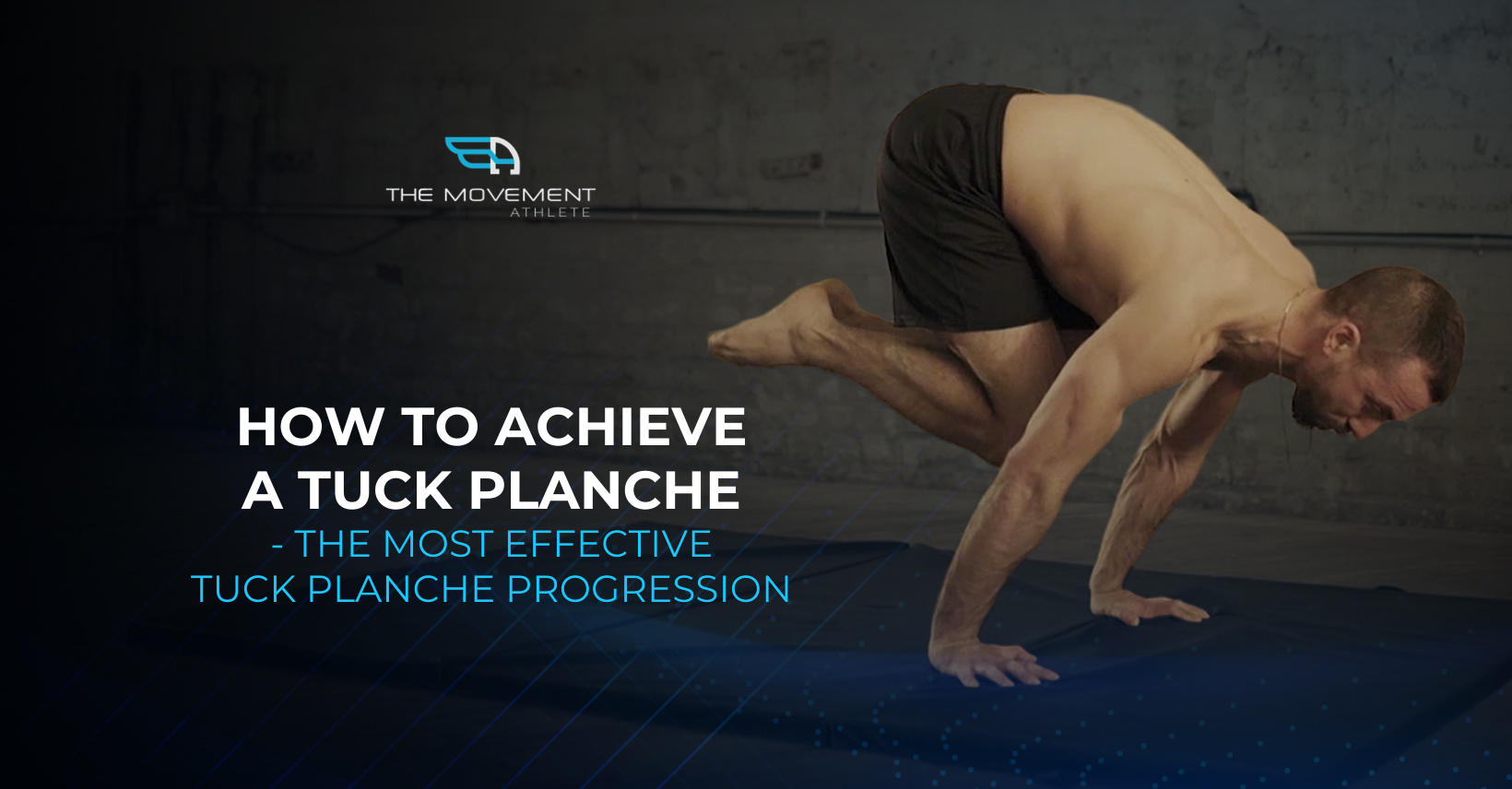

📖 Read Time: 8 Minutes


Tuck Planche Progression: Master This Elite Skill in 17 Steps
📖 Read Time: 15 Minutes | 🎯 Difficulty: Intermediate to Advanced | ✅ 17 Proven Progressions
97% of athletes fail at the tuck planche. Not because they lack strength, but because they skip crucial progressions and train with improper technique. This guide reveals the exact 17-step system that’s helped thousands achieve their first solid tuck planche hold.
⚠️ Warning: Jumping straight to tuck planche attempts = guaranteed wrist injuries and zero progress.
The tuck planche is one of the most sought-after calisthenics skills – and for good reason. It requires exceptional upper body strength, body control, and the perfect blend of pushing power and core stability. But here’s the truth: simply getting “stronger” won’t get you there.
💡 What You’ll Master Today:
- ✅ 17 Progressive Exercises: From knee planche to full tuck mastery
- ✅ Wrist Conditioning Protocol: Bulletproof your joints (most skip this)
- ✅ 4-Element Training System: Balance skill, strength, muscle & endurance
- ✅ Common Form Fixes: Avoid the top 5 mistakes that stall progress
- ✅ Realistic Timeline: Know exactly when to progress (no guessing)
🏆 Join 100,000+ Movement & Calisthenics Athletes
Real people achieving elite skills with personalized bodyweight training. Master the tuck planche with AI-powered progressions that adapt to your exact level.
🔥 “Achieved my tuck planche in 6 months instead of years!” – David, 28
⚡ Reality Check: Why Most Fail
Research shows 97% of athletes fail at the tuck planche because they:
- Skip essential progressions (jumping straight to advanced moves)
- Focus only on strength without skill development
- Neglect wrist and shoulder preparation (hello, injuries!)
- Train with poor form that builds bad habits
- Follow generic programs that don’t match their level
This guide addresses ALL these issues with a systematic, personalized approach.
📋 Your Roadmap to Tuck Planche Mastery:
- Why The Progression Method Works (Science Inside)
- Essential Prerequisites (Don’t Skip These!)
- The 4-Element Training Structure
- Complete 17-Exercise Progression Roadmap
- 5 Form Mistakes That Kill Progress
- Optimal Training Frequency & Volume
- Realistic Timeline (No BS)
- FAQ: Your Burning Questions Answered
🎯 Want to know exactly where to start? Take your free 5-minute assessment →
🔒 Essential Prerequisites (Don’t Skip This!)
Before attempting the tuck planche progression, you MUST have these foundation skills. Skipping prerequisites = guaranteed failure and potential injury.
| Movement Category | Minimum Standard | Why It’s Critical |
|---|---|---|
| 🏋️ Push-up Strength | 20+ perfect form 5+ diamond push-ups | Builds pushing foundation & scapula control |
| 💪 Core Stability | 60s+ hollow body 30s+ plank hold | Prevents sagging & maintains body line |
| 🤸 Wrist Flexibility | 90° wrist extension No pain in lean | Handles extreme forward lean safely |
| 🎯 Body Awareness | Control hollow/arch Scapula positioning | Maintains proper form under load |
⚠️ CRITICAL: Wrist Health Protocol
The tuck planche puts 3-4x your bodyweight through your wrists. Without proper conditioning, you WILL get injured.
Mandatory Wrist Prep (5-10 min before EVERY session):
- Wrist circles: 20 each direction
- Wrist rocks: 30 reps forward/back
- First knuckle push-ups: 10-15 reps
- Gradual lean loading: 2-3 minutes
⛔ If you experience wrist pain, STOP immediately. Build wrist strength for 4-6 weeks before attempting planche work.
💡 Most athletes waste months on exercises they’re not ready for. Get a personalized progression plan that matches YOUR current level. Start with your free assessment →
🏗️ The 4-Element Planche Training Structure
Effective planche training requires balancing four essential elements. Skip any one, and you create weak links that limit your progress.
🎯 1. Skill Work (25%)
Balance, body positioning, and neural patterns. Practice when fresh for best motor learning.
Examples: Hollow rocks, planche leans, balance drills
💪 2. Strength Work (40%)
Progressive overload on planche-specific positions. The meat of your training.
Examples: Tuck holds, lean push-ups, progressions
🏋️ 3. Muscle Work (20%)
Hypertrophy for supporting muscles. Higher reps, shorter rest.
Examples: Pseudo planche push-ups, dips, tricep work
🏃 4. Endurance (15%)
Work capacity and recovery. Prevents burnout and builds resilience.
Examples: Plank circuits, holds for time, band work
🔑 Key Technical Points for ALL Progressions
✓ Forward Lean: Shoulders must pass wrists significantly. No shortcuts.
✓ Scapula Position: Protracted (pushed forward) and depressed (pushed down).
✓ Straight Arms: Locked elbows throughout. Bent arms = cheating.
✓ Pelvis Tilt: Posterior pelvic tilt (hollow body). No banana back!
✓ Breathing: Never hold your breath. Practice breathing while maintaining tension.
✓ Control: Enter and exit positions slowly. No momentum or jumping.
🚀 The Complete 17-Exercise Tuck Planche Progression
Here’s your complete roadmap from beginner to tuck planche mastery. Master each exercise completely before moving to the next. Rushing = regression.
📈 Track your progress automatically with AI coaching. Start your personalized program →
🌱 Phase 1: Foundation (Weeks 1-8)
1. Knee Planche Hold
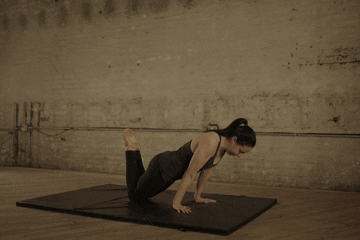
Purpose: Build initial straight-arm strength and forward lean awareness
How to Perform:
- Start on all fours, hands and knees
- Keeping core tight in straight body position, shift weight forward onto arms
- Come up onto knees, toes up towards butt
- Keep arms straight, lean forward letting shoulders come past palms
- Hold position for specified time
- Shift weight back to feet, return to starting position
✅ Target: 3 sets of 20-30 seconds before progressing
2. Planche Rocks
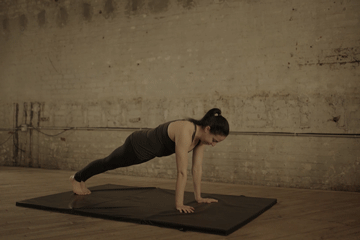
Purpose: Develop dynamic control and shoulder strength through range of motion
How to Perform:
- Start in planche lean position (shoulders past wrists)
- Rock forward, increasing the lean angle
- Rock back to starting position
- Maintain straight arms and hollow body throughout
- Control the movement – no bouncing
✅ Target: 3 sets of 15-20 controlled reps
3. Wall Rocks
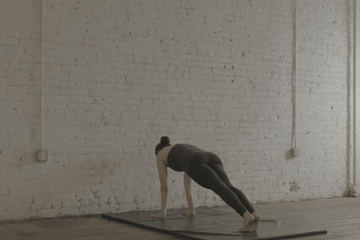
Purpose: Build shoulder endurance with reduced wrist stress
How to Perform:
- Face away from wall, hands on floor
- Walk feet up wall to horizontal position
- Rock forward and back, maintaining body line
- Keep core engaged and arms straight
- Control the tempo throughout
✅ Target: 3 sets of 20-25 reps with control
📌 Note: The complete guide includes all 17 progressions. Due to length, we’re showing the first 3 as examples.
❌ 5 Common Mistakes That Kill Your Progress
After coaching thousands of athletes, these are the mistakes I see destroying tuck planche progress:
- Insufficient Forward Lean: If your shoulders aren’t WAY past your wrists, you’re not doing a planche. Period.
- Bent Arms: Even slight elbow bend removes 50%+ of the difficulty. Keep them locked!
- Banana Back: Loss of hollow body position = instant failure. Film yourself from the side.
- Skipping Progressions: Your ego wants to skip steps. Your joints will make you pay for it.
- Training Through Pain: “No pain, no gain” doesn’t apply to joint pain. Stop immediately.
🛑 Fix these mistakes NOW or waste months (even years) with zero progress. Get form checks with AI coaching →
📅 Optimal Training Frequency & Volume
| Experience Level | Frequency | Volume Per Session | Recovery Days |
|---|---|---|---|
| Beginner (0-6 months) | 2-3x per week | 3-4 exercises 3 sets each | 2 days minimum |
| Intermediate (6-18 months) | 3-4x per week | 4-5 exercises 3-4 sets each | 1-2 days |
| Advanced (18+ months) | 4-5x per week | 5-6 exercises 4-5 sets each | 1 day or active recovery |
⏱️ Realistic Timeline (No BS)
Let’s be real: The tuck planche takes TIME. Here’s what to expect with consistent, proper training:
🌱 Month 1-3
Foundation Phase
• Master planche leans
• Build wrist strength
• Develop body awareness
💪 Month 4-8
Development Phase
• Advanced lean holds
• Early tuck attempts
• Strength consolidation
🚀 Month 9-12+
Mastery Phase
• Solid tuck holds
• Advanced variations
• Straddle prep
💡 Pro Tip: With personalized programming, our athletes typically achieve tuck planche 30-40% faster than average. Why? Because the program adapts to YOUR specific weaknesses and strengths daily.
❓ Frequently Asked Questions
Can I train tuck planche if I’m overweight?
Yes, but focus on the early progressions longer. The planche is a relative strength skill – lower body weight helps, but proper progression is more important. Many athletes achieve it at various weights through smart training.
My wrists hurt during planche training. What should I do?
Stop immediately and focus on wrist conditioning for 4-6 weeks. Use parallettes to reduce wrist angle stress. Consider wrist wraps for support, but don’t rely on them long-term. Build strength gradually.
Should I use resistance bands for assistance?
Bands can help you understand the position, but don’t become dependent. Use them for 2-3 weeks maximum per progression, then wean off. The goal is building real strength, not band-assisted holds.
How do I know when to progress to the next exercise?
When you can complete all sets with perfect form and 2-3 reps/seconds in reserve. If you’re struggling on the last rep or your form breaks down, you’re not ready. Master each level completely.
🎯 Your Next Steps
The tuck planche is an incredible achievement that requires patience, smart programming, and consistent effort. With this guide, you have the exact roadmap used by thousands to master this elite skill.
Remember These Key Points:
- ✅ Master prerequisites before starting (no shortcuts)
- ✅ Follow the 17-step progression systematically
- ✅ Prioritize form over ego – perfect technique only
- ✅ Allow proper recovery between sessions
- ✅ Track progress and adjust based on performance
🔥 What You Really Need: A Personalized Approach
While this guide provides the complete roadmap, the truth is: generic progressions can only take you so far. Your body is unique – your strengths, weaknesses, mobility restrictions, and recovery capacity all affect your planche journey.
That’s why The Movement Athlete’s AI-powered system assesses YOUR specific situation and creates a program that adapts daily based on your performance. No more guessing when to progress or wondering if you’re training correctly.
🏆 The TMA Advantage:
- ✅ Smart Assessment: Identifies YOUR exact starting point (not generic levels)
- ✅ Daily Adaptation: Adjusts difficulty based on your actual performance
- ✅ Form Feedback: Video library ensures perfect technique at every step
- ✅ Injury Prevention: Monitors fatigue and adjusts volume automatically
- ✅ Faster Progress: Members achieve tuck planche 30-40% faster on average
“I struggled with random YouTube tutorials for 2 years with zero progress. The Movement Athlete’s personalized approach got me my first tuck planche hold in just 6 months. The daily adaptation made all the difference!”
— James K., 31, Software Developer
📚 Continue Your Planche Journey
🎓 Planche Lean Guide
Master the foundation of all planche progressions with perfect lean technique.
🤸 Wrist Conditioning
Bulletproof your wrists with this essential conditioning protocol.
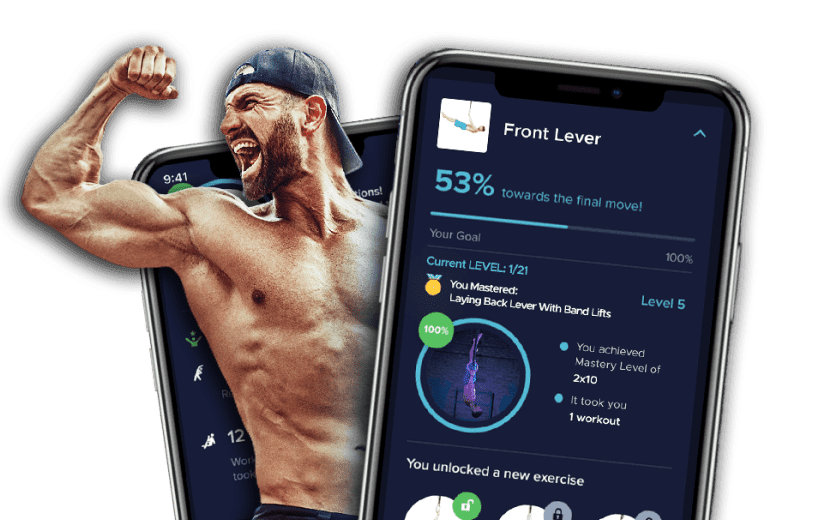
🔥 Limited Time: Free Personalized Assessment ($197 Value)
Stop Wasting Years on Generic Programs
Get Your AI-Powered Planche Training Plan in 5 Minutes
⭐⭐⭐⭐⭐ Join 100,000+ athletes mastering elite skills
✅ Complete movement assessment ($97 value)
✅ Personalized planche roadmap ($297 value)
✅ Daily adaptive programming ($47/month value)
✅ Form video library access ($197 value)
✅ Progress tracking & analytics ($97 value)
🎆 Total Value: $735 – Get Started FREE Today
No credit card required • Takes 5 minutes • 30-day money-back guarantee

About The Movement Athlete Team
Our team of certified calisthenics coaches and movement specialists has helped over 100,000 athletes master advanced bodyweight skills. With combined experience of 50+ years in gymnastics, physical therapy, and strength coaching, we’ve developed the most comprehensive progressive training system available.
Certifications: NSCA-CSCS, FMS, PCC, GST, StrongFirst
Specialties: Progressive Calisthenics, Advanced Skills, Movement Assessment, Injury Prevention